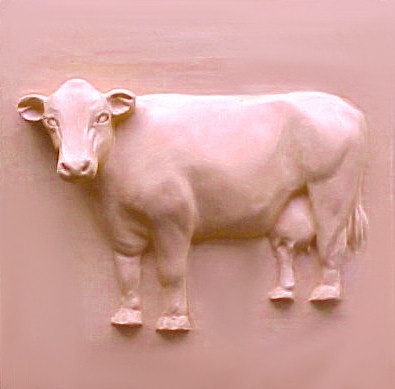Weekly news from the EEFPress report about the only Egyptian mummy of the Auckland Museum, and the debate about exhibiting human remains:
"Display of Egyptian mummy a tad hypocritical":
http://www.nzherald.co.nz/index.cfm?c_id=466&ObjectID=10009134Museum's page about the mummy:
http://www.aucklandmuseum.com/default.asp?t=269[Ed.s It's an editorial, not really a "report".]
In the new January/February 2005 issue of Current World Archaeology, no.9, there is a story about the moving, and scanning, of the statue of Ramesses II . Only the abstract is online, but with photos:
http://www.archaeology.co.uk/cwa/issues/cwa9/cwa9.htm#ramessesOn the Archaeology Magazine website, the Interactive Dig Update - "Fixing the Fort at Hierakonpolis" has been updated with Part Three. Renee Friedman about King Khasekhemwy's Ceremonial Enclosure.
http://www.archaeology.org/interactive/hierakonpolis/field/fortc.html[Submitted by Michael Tilgner]
A Stela of Ikhernofret (Berlin 1204) date: 12th dyn., reign of Sesostris III
-- Photograph in: William Kelly Simpson, The Terrace of the Great God at Abydos: The Offering Chapels of Dynasties 12 and 13, New Haven and Philadelphia, 1974, pl. 1
-- Drawing: LD II, 135 h (393 KB)
URL:
http://snipurl.com/cnn4-- Hieroglyphic text
URL:
http://webperso.iut.univ-paris8.fr/~rosmord/hieroglyphes/ikhernofret.html-- English translation in: James Henry Breasted, Ancient Records of Egypt, vol. I, Chicago, 1906, sections 661-670
URL:
http://library.case.edu/ksl/ecoll/books/breanc00/breanc00.htmlalso:
http://nefertiti.iwebland.com/texts/ikhernofret.htmOnline dissertation: Thierry Verdel, Géotechnique et Monuments Historiques. Méthodes de modélisation appliquées à des cas égyptiens, Thèse présentée devant l'Institut National Polytechnique de Lorraine, Ecole de
Mines, Nancy, 1993. 303 pp. - pdf-file: 2.3 MB
"... we specially dealt with two main problems : the role played by discontinuities and the role played by the clay swelling phenomenon on the stability of some Egyptian monuments. The Baboon tomb and the Serapeum at
Sakkara, Memnon Colossi and IXth Pylon of Karnak temple at Luxor were used to illustrate these problems."
URL:
http://www.mines.inpl-nancy.fr/laego/Roches/docs/TheseTV0.pdfDigitized Books from the Giza Digital Library
-- George A. Reisner, A History of the Giza Necropolis, vol. I, Harvard University Press, Cambridge, 1942. xlvii, 532 pp., 75 pls., 2 maps - pdf-file: 250 MB (can also be downloaded in parts)
URL:
http://www.gizapyramids.org/code/emuseum.asp?newpage=gizanecropolis1-- George A. Reisner, William Stevenson Smith, History of the Giza Necropolis, vol. II: The Tomb of Hetep-heres, the Mother of Cheops, Harvard University Press, Cambridge, 1955. xxv, 102 pp., figs., 55 pls. - pdf-file: 77 MB
URL:
http://www.gizapyramids.org/code/emuseum.asp?newpage=gizanecropolis2Guido Heinz, "Pharaoh Pepi I: Documentation of the Oldest Known Life-size Metal Sculpture Using Laser Scanning and Photogrammetry." Online, 5 pp. in PDF (316kB):
http://www.i3mainz.fh-mainz.de/publicat/korfu/p23_Heinz.pdfInformation (in German) about the Master Thesis (2004) on which the article was based (with some pictures):
http://www.geoinform.fh-mainz.de/diplomarbeiten/M001/And a related article (in PDF, 17 pp.) about the process of 3D scanning, with a chapter about the Pepi I statues:
Wolfgang Boehler, Monica Bordas Vicent, Guido Heinz, Andreas Marbs and Hartmut Mueller, "High Quality Scanning and Modeling of Monuments and Artifacts" (FIG Workshop 2004):
http://www.i3mainz.fh-mainz.de/publicat/boehler04/WSA2_2_Bohler_et_al.pdfOn the website of Prof. Martin Ziermann, called "Bauforschung und Archaeologie", you may find many PDF files about
architectural studies on ancient Egypt.
-- For example two drafts of German articles that later were published elsewhere, may be found at
http://people.freenet.de/bauforschung/"Frühe Befestigungsanlagen in Elephantine und Ayn Asil" (pdf file, 97 KB)
"Palast und Ka-Haus im frühen Ägypten" (pdf file 422 KB)
-- Several files, mostly in German but with English abstracts, at
http://home.arcor.de/bauforschung/index.htmPick in the menu on the left "Forschung" and then "Aegypten" (many published articles, about Abydos, Buto, Elephantine), and in the menu on the right "[English] Abstracts".
The Discovery Channel in the Middle East and North Africa has an "Egypt Week" starting March 27.
Press report: "Reinventing ancient Egyptian history. The Discovery Channel glams up mummies, pharoahs and infamous queens."
http://snipurl.com/coff











